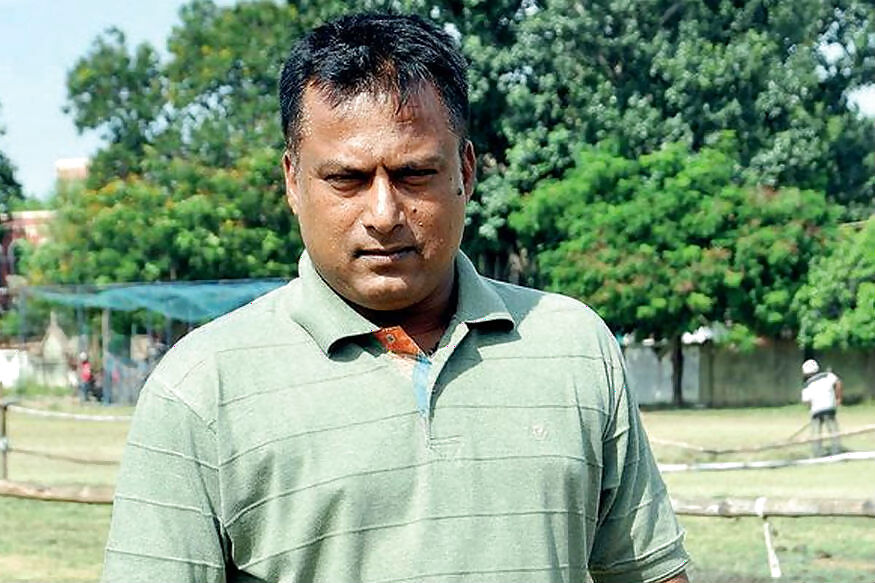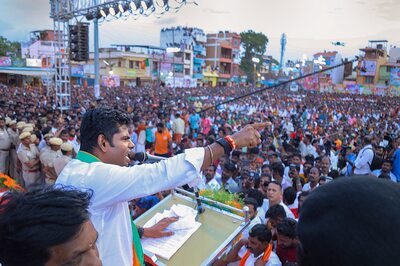
views
Twenty-five Aprils ago, a left-handed middle-order batsman was selected to India’s one-day team. Fans of a certain vintage will remember the frenzied anticipation surrounding the arrival of Atul Bedade – or badadve, as Sunil Gavaskar fondly called him, punning on the Marathi word for “smasher”.
Newspapers and magazines painted a picture of a monster six-hitter who habitually deposited cricket balls into parking lots of stadiums. Chakkebaaz, some reports called him. “Simply devastating,” said Ravi Shastri, about Bedade’s 112-ball 133 in a Ranji Trophy match against Bombay, an innings that contained a whooping 106 runs in boundaries.
“Just the guy Indian cricket needs,” said Bedade’s captain in Baroda, Kiran More.
Bedade didn’t live up to the heady promise. His international career was limited to 13 ODIs and barring that brief flurry on a sunny afternoon in Sharjah – against Pakistan in the Austral-Asia Cup final – his six-hitting powers mostly deserted him. Some attributed his modest returns to an inability to come to grips with quality bowling. Others blamed the team-management for failing to nurture his blockbuster potential.
Every time the IPL comes around, I can’t help but think of Bedade. What a superstar he could have been in this extravaganza, walking in at the 12-over mark and thundering a half-century. I also wonder what made him score at such a frenetic pace in the early 1990s. Did he think it was his best chance to get noticed? Would he have made as big a splash in the domestic scene had he restrained himself and focused on being consistent rather than smashing six after six? In other words, would Bedade have been Bedade had he not wanted to hit every other ball into orbit?

There has always been a class of Indian batsman who chooses to swing for the fences. This was true even before domestic cricket was televised. To play for a strong first-class side was to generally be assured of selectors taking note of one’s consistency and appetite for big scores.
Those like Bedade (Baroda), Amay Khurasiya (Madhya Pradesh) and MS Dhoni (Bihar, then Jharkhand) – whose teams rarely made the knockouts and whose matches were under-reported on – chose the road less traveled. It took four years for Dhoni to find a place in the East Zone XI. In the first four balls he faced – in the Duleep Trophy final in 2004 – he slammed four fours. The elated East Zone selector, who was present at the venue, would exclaim at day-end: “superstar”.
These batsmen are far removed from the Gavaskar-Dravid school of technical perfection or the Tendulkar-Shaw school of prodigious run-scoring or the Viswanath-Azharuddin school of artistry or even the Gambhir-Rohit school of first-class preeminence. This is the zone where Kapil Dev and Virender Sehwag run riot. Where a follow-on is averted with four consecutive sixes; and where a 300 comes up with a shimmy down the ground and a rocket into the stands.
This is the zone that Rishabh Pant inhabits.
*
Under normal circumstances, a batsman with five ODI appearances, with a highest score of 36, would never be discussed when selecting a squad for the World Cup. But there is nothing normal about Pant. Not in the belligerence with which he attacks the ball. Nor in the audacity and inventiveness that send the ball at angles that are inconceivable from the shape of his stance.
The decision to pick Dinesh Karthik ahead of Pant may have been a conservative choice but it was perfectly logical. Karthik is more experienced and understands the rhythms of ODIs. He can bat in multiple gears and is perhaps better suited to walk in after a top-order collapse. There was a case for picking Pant as a specialist batsman – and stick him in at No. 4 – but perhaps the selectors deemed him too raw for such a crucial role in such a big tournament.
Still, if India are 220 for 3 with ten overs to go in a World Cup game it’s natural to think up the delicious possibilities that Pant could offer. Sure, he could hole out for a single-digit score but what if it is one of those days when the stars align? When Pant is in such a rampaging mood – scooping, ramping, kneeling and scooping over fine leg, wind-milling his bat with abandon, lofting one-handed sixes over midwicket – that there is no limit to what is possible.
Such optimism stems from Pant’s ability to conjure boundaries off perfectly good deliveries and the ease with which he scores all around the wicket. He has no obvious weakness against any type of bowler – or ball – and is the closest India have to a maverick like AB de Villiers. Pant in his element can neutralise lines and lengths.
In the game against Mumbai Indians last month, Jasprit Bumrah targeted Pant’s hips with a quick ball pitched back of a length. This was a judicious tactic at the death, giving the batsman no space to free his arms. Pant, though, created his own space with a deft tuck of his hip – giving himself enough leeway to judder a short-arm jab backward of square. Freeze the frame when bat strikes ball and you may think he will get a single. So sweet is the timing, so precise the placement, none of the fielders stands a chance.
Or take his innings against Rajasthan Royals on Monday. 48 of his 78 runs came in boundaries. The rest comprised 15 singles, six twos and one three. It becomes hard for a bowler to know what length to bowl when a batsman mixes brute force with judicious placement. Bring the fine leg up and cut down on pace? Pant slaps you over your head. Surprise him with a bit of extra pace and bounce. Pant swats you anywhere in the arc between midwicket and fine leg.
The downside to his aggression is that Pant is invariably blamed for his dismissal. He is rarely out playing a defensive shot and isn’t often outdone by an unplayable ball. Pant gets out either failing to connect expansive drives or miscuing it into the hands of a fielder. This can come across as poor judgement, or an inability to temper his aggression. But perhaps one must accept that a couple of low scores is the price one pays for the blinders to follow.
“I want him to go out there with pure freedom and with no other thought in the back of his head other than trying to hit the ball for a six,” said the Delhi Capitals coach Ricky Ponting. “I’m not going to tell him to slow down and settle down, because I know if he plays his best, he wins games for us.”
Ponting could have been talking about another batsman from Delhi who was in a league of his own in Tests but couldn’t find the same level of success in ODIs. Whether Pant’s career shapes up like Sehwag’s – or whether he can master all formats – time will tell. What we know is that when Pant bats, he comes with the promise of doing the unthinkable. To make us fly off our seats. To widen our eyes. To drop our jaws. To hope for something we have never seen before.
And for that we should be thankful.
Read all the Latest News, Breaking News and Assembly Elections Live Updates here.




















Comments
0 comment